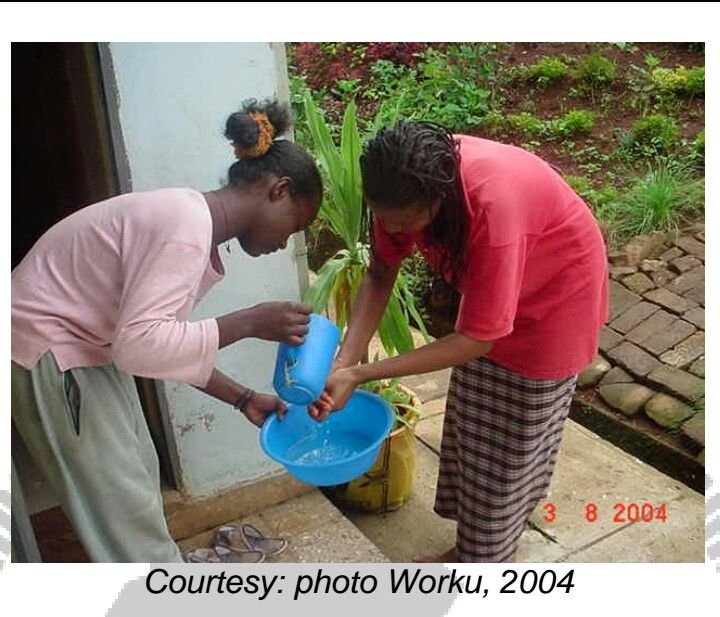Hygiene promotion
This is a planned, systematic approach that enable people to take action to prevent water, sanitation and hygiene-related diseases.
Hygiene promotion should aim;
• to reduce the incidence of poor hygiene practices and conditions that pose the greatest risk to the health of children, women and men.
• make sure that people make the best use of the water,sanitation and hygiene-enabling facilities and services provided.
These could be done through;
• sharing of information and knowledge( which am here to do)
• mobilizing affected communities
• providing essential materials and facilities.
One of the principles of hygiene promotion is;
• Focus on a small number of risk practices. Because changing habits is not easy, an assessment should be made to understand which risk practices are most widespread, and which can be changed. Which are likely to include hand washing with soap.

Hand washing has a lots of role to play in being healthy. Due to the hot and humid climate our hand has oil secretions which makes it conducive for germs to grow. So failure to perform appropriate hand hygeine will be considered a route for direct transmission of disease.

Hand washing before and after going to the toilet.
How to control or measures to prevent the transmission of diseases from hands
Keep finger nails always clean.
Keep finger nails always trimmed or short.
Use soap for hand washing before and after eating.
Use soap for hand washing after visiting latrine.
Use soap for hand washing before any food preparation is carried out
Other hygeine promotion practices include;
- feet/foot
- teeth/tooth
- respiratory hygeine etc.
I will be elaborating on each of them in my next post.
FOR PUBLIC HEALTH PRACTITIONERS LIKE ME
How can we plan a successful promotion campaign???
• Set a goal.
The goal will usually be to improve the quality of life (or to reduce the loss of life).
• Identify hygiene problems.
These should have been identified by your initial assessment.
• Identify key behaviours linked to the problems.
These could relate to activities such as handwashing or excreta disposal but could equally be related to a poor understanding of technology, or wrong attitudes to gender issues or the environment.
• Determine the cause of the problems.
The more accurately the causes can be identified the easier it will be to target the campaign.
• Prioritize actions.
Decide which problems to target first. This will depend on balancing the priorities for improving health with available resources.
• Develop a strategy.
Decide which methods and tools you intend to use.
EFFECTIVE TOOLS TO BE USED;
• Radio broadcasts.
An effective method of reaching a large number of people quickly. They should be brief, informative and entertaining.
• Public address systems.
These can be used instead of radio broadcasts if the area to be covered is small or radios are unavailable. Use loudspeakers in key locations or a mobile system attached to a slow-moving vehicle.
• Posters.
Posters can be quickly and easily prepared, preferably in collaboration with the community. The main message should be displayed in the pictures, backed up by a few simple words in the local language.
• Drama and street theatre. Drama is a powerful way of getting messages across. A simple story with exaggerated characters and plenty of audience participation is ideal.
• Puppet shows and games.
Puppet shows and games are an excellent form of communication when the target group is children. Highly interactive entertainment is likely to be most effective.
• Slide, film and video presentations.
If appropriate visual materials and facilities to show them are readily available they can reach a large audience in a short time. Their impact can be enhanced by subsequent group discussions highlighting key points conveyed.
• Focus group discussions.
A guided group discussion can improve understanding of current behaviour patterns and the reasons behind them.
• One-to-one discussions and home visits. This is a time consuming option but very effective where skilled facilitators are used. They can work with individual families to develop specific practices to suit individual needs.
All of these successfully applied will lead to successful campaign.
I hope this post helps alot of people.
Share and resteem and upvote too. Let it reach children and adults home and abroad.
Stay tuned for more.